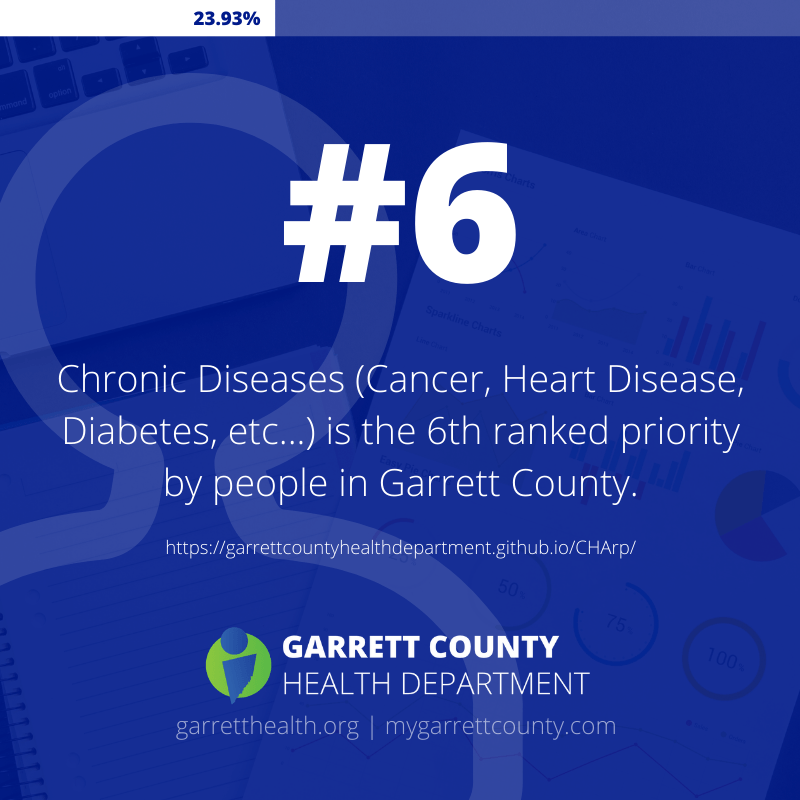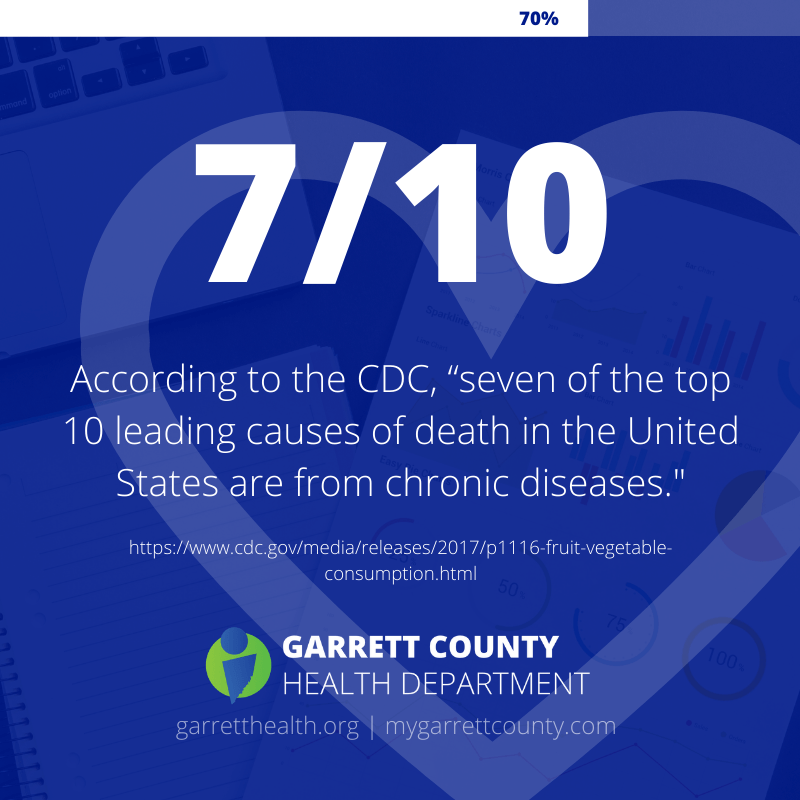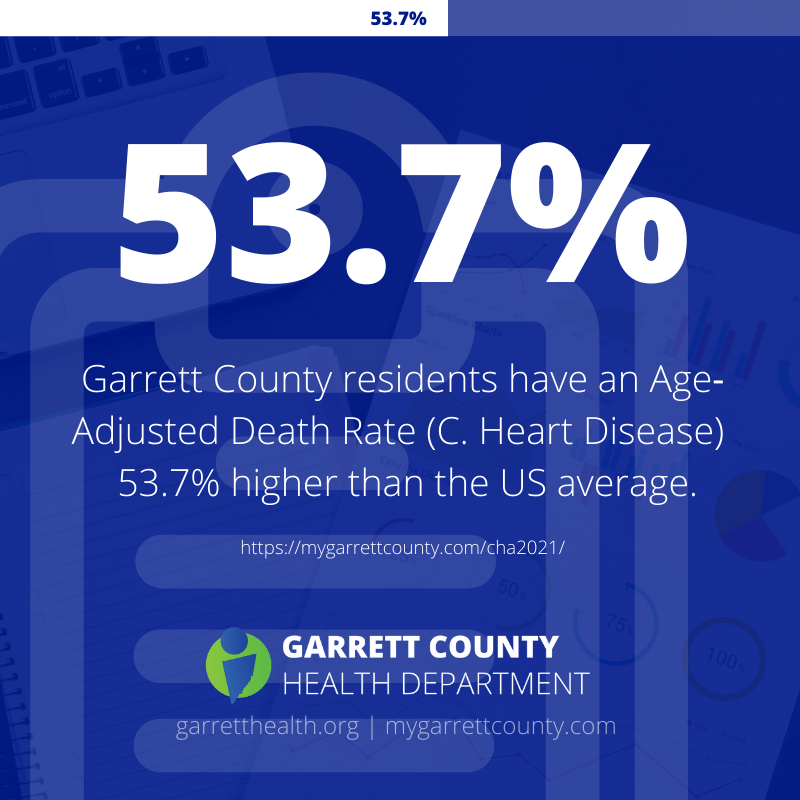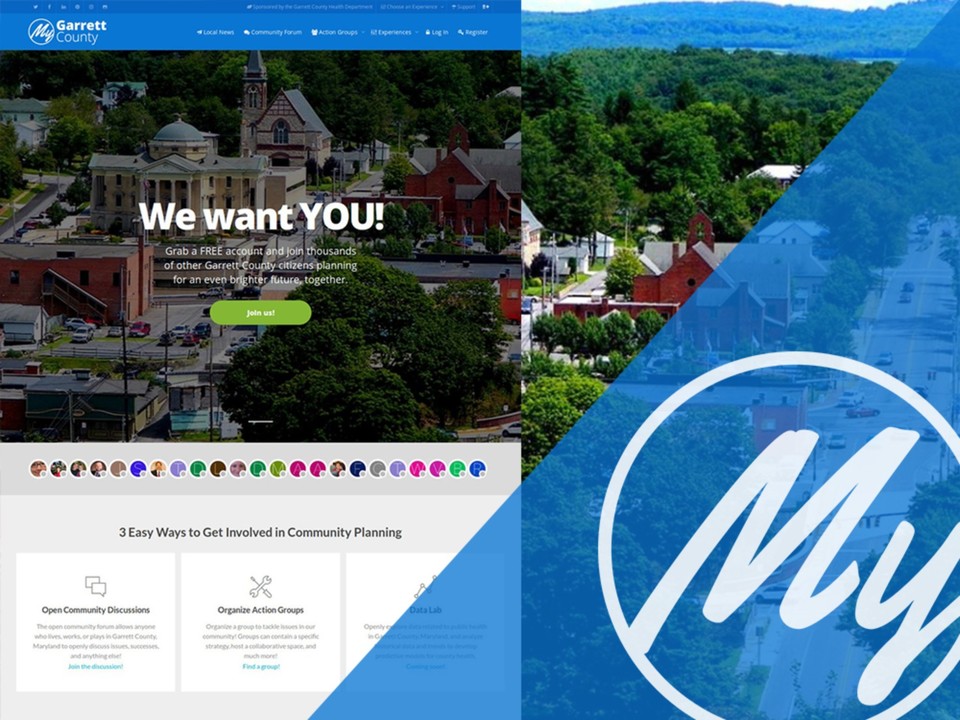Chronic Diseases (Cancer, Heart Disease, Diabetes, etc…)

Insight #1
According to the most recent Garrett County Community Health Assessment (https://mygarrettcounty.com/cha2021/), Chronic Diseases (Cancer, Heart Disease, Diabetes, etc…) was the 6th most important priority identified by Garrett County stakeholders in the prioritization survey (see more in the 2019-2021 Community Health Assessment Research Portal – CHArp
https://garrettcountyhealthdepartment.github.io/CHArp/).
The latest guidelines demonstrate that, based on the best science, everyone can improve their health just by moving. (https://health.gov/paguidelines/default.aspx)
The CARC demonstrates they are interested in youth by tracking utilization and offering special programming. Visit their action group to learn more about their efforts to address chronic diseases at: https://mygarrettcounty.com/groups/garrett-college-community-aquatic-and-recreation-complex/
Not into the gym? Check out a new trail in our area and learn more about local non-profit Garrett Trails, by checking out their action group at: https://mygarrettcounty.com/groups/garrett-trails/
or simply walk to your neighbors to say hi to get your heart pumping (as long as it’s warm enough to be outside).
Insight #2
“Seven of the top 10 leading causes of death in the United States are from chronic diseases. Eating a diet rich in fruits and vegetables daily can help reduce the risk of many leading causes of illness and death, including heart disease, type 2 diabetes, some cancers, and obesity.” (CDC, https://www.cdc.gov/media/releases/2017/p1116-fruit-vegetable-consumption.html)
It’s difficult to find programs or county-wide initiatives for addressing chronic diseases that are open to everyone in Garrett County.
The Garrett County Health Planning Council (https://mygarrettcounty.com/groups/health-planning-council/) just held a breakout to see how we could work together more effectively to help people make choosing a healthy lifestyle the easier choice! Check out what they are planning at https://mygarrettcounty.com/groups/health-planning-council/ad-hoc-committee-on-diabetes/.
Do you have an idea that would help Garrett County residents prevent and/or manage diabetes? We’d love to hear your thoughts in any of these action groups!


Insight #3
The Age-Adjusted Death Rate (C. Heart Disease) in Garrett County, Maryland is 53.7% higher than the national average.
This is very important as heart disease is the leading cause of death in the United States (https://www.cdc.gov/nchs/fastats/leading-causes-of-death.htm).
“The prevalence of heart disease in Garrett County is high and residents of all ages need to know their risks and how to prevent a cardiovascular event. The goal is to get those already diagnosed with high blood pressure to take their medications and make lifestyle changes as prescribed by their doctors, and to identify those with undiagnosed hypertension.” Check out the inspiring Blood Pressure Monitoring Program Action Group at: https://mygarrettcounty.com/groups/blood-pressure-monitoring to see how the Garrett County Health Department’s Health Education and Outreach Unit is working to improve access to screening in Garrett County.
Taking Action!
We hope you’ve enjoyed learning about these Garrett County Insights. Stay tuned for more data insights as we work through the extensive Garrett County Community Health Assessment to share important findings with our community stakeholders. Visit mygarrettcounty.com and keep up to date with the insights as they are reported at the Health Planning Council by all of our sectors. Follow that group by joining https://mygarrettcounty.com/groups/health-planning-council/.
